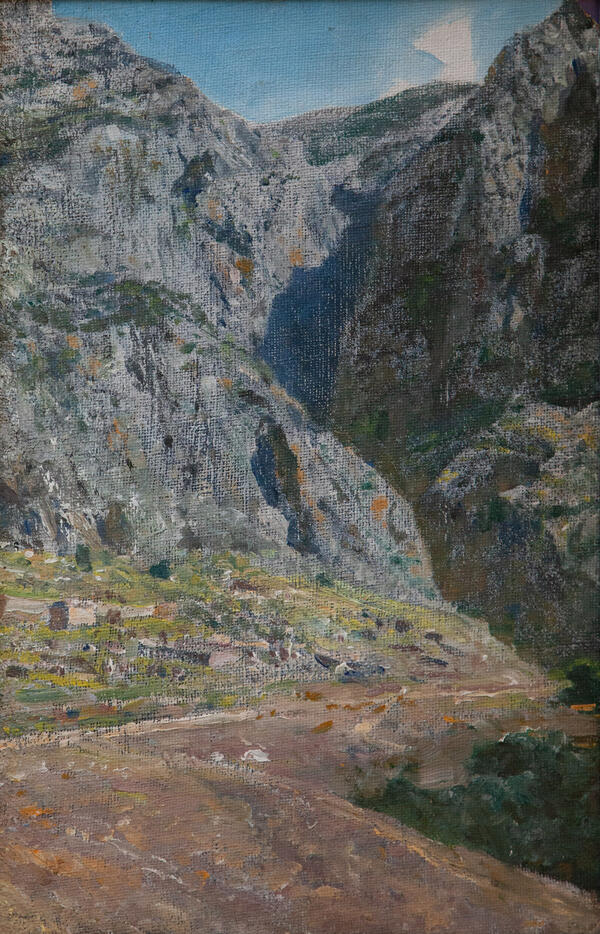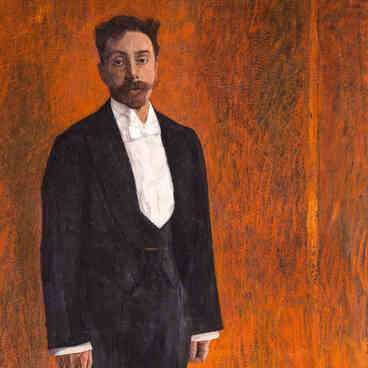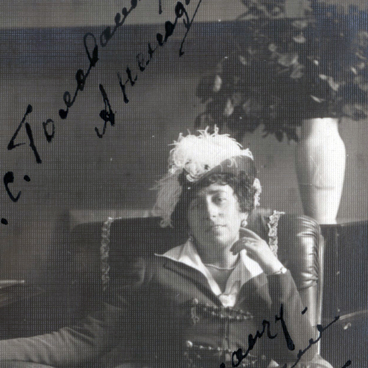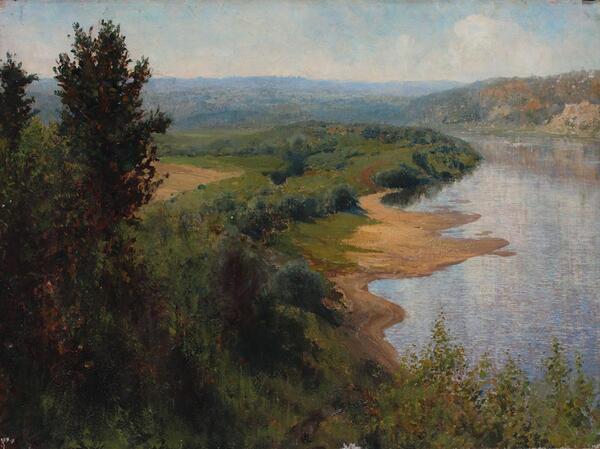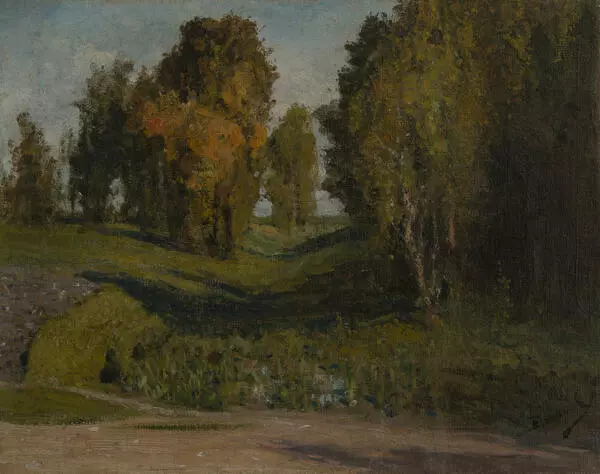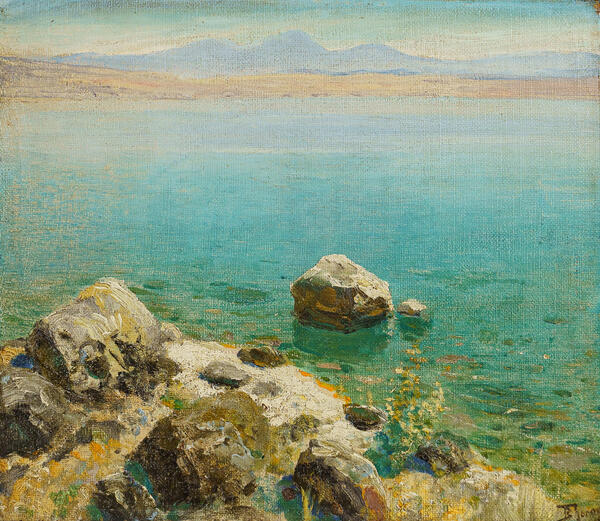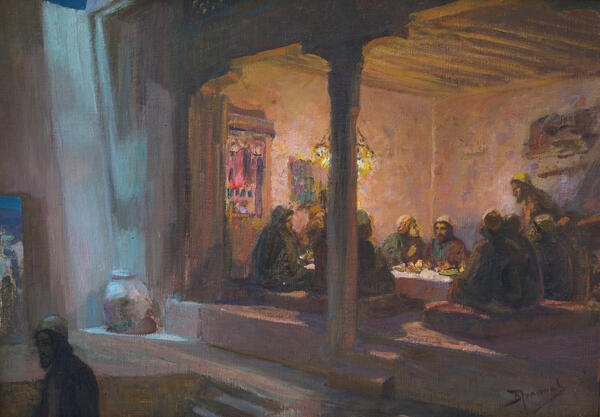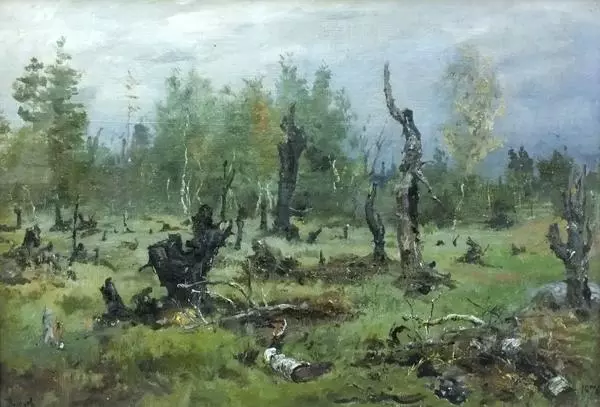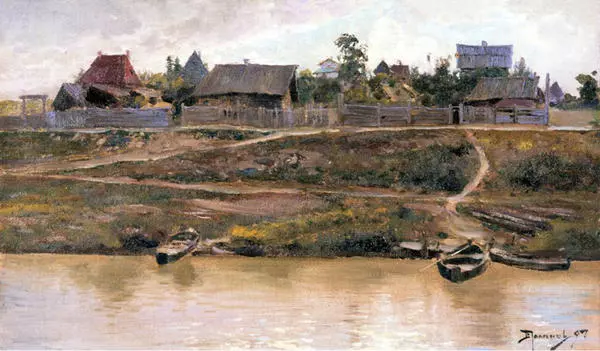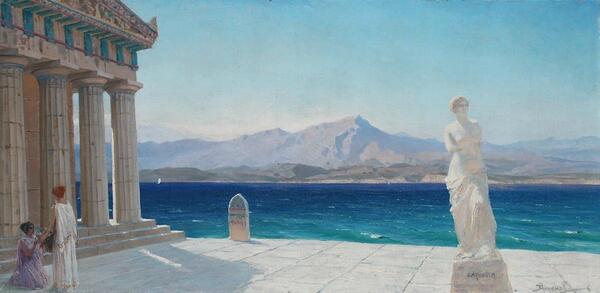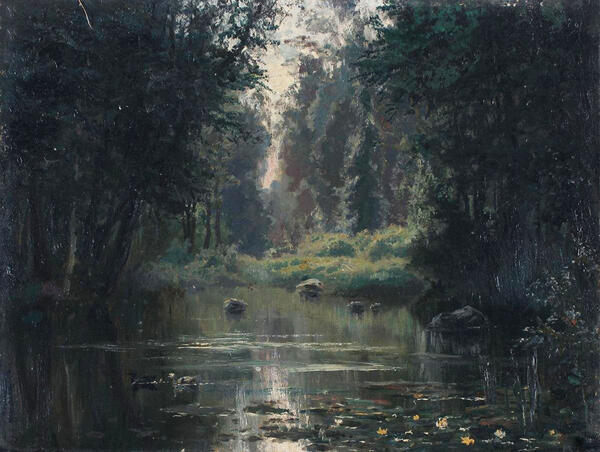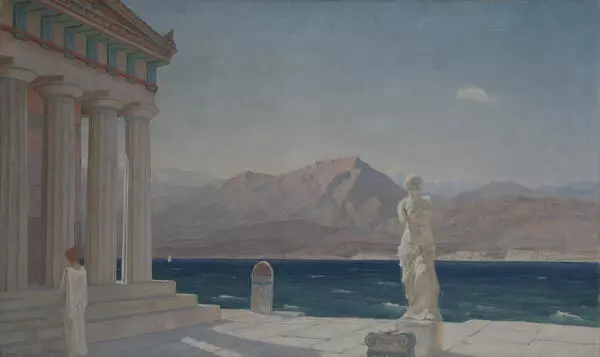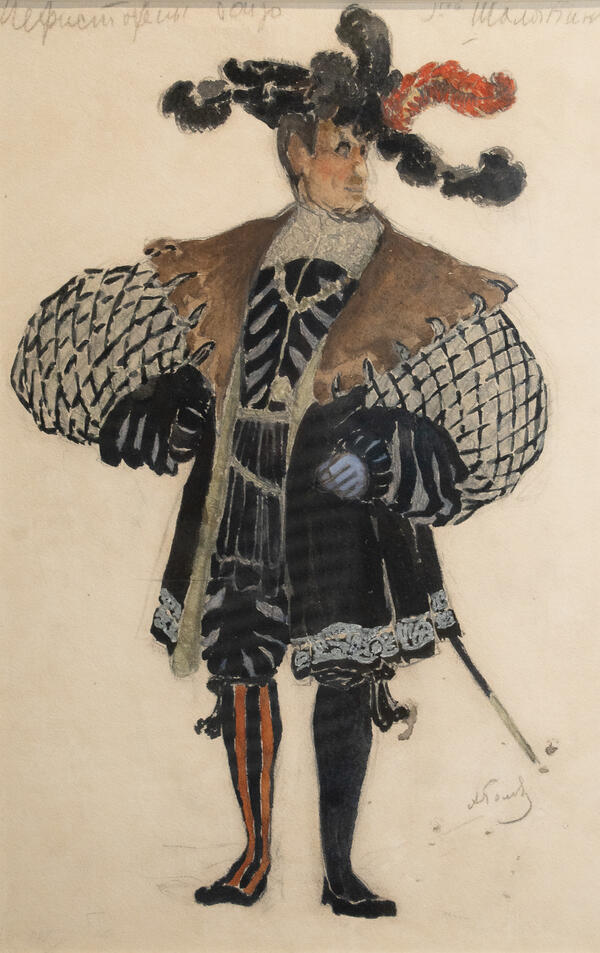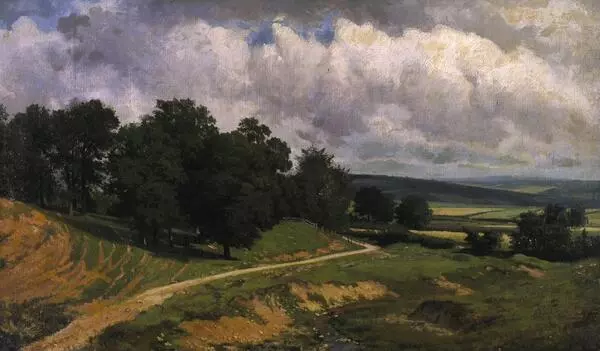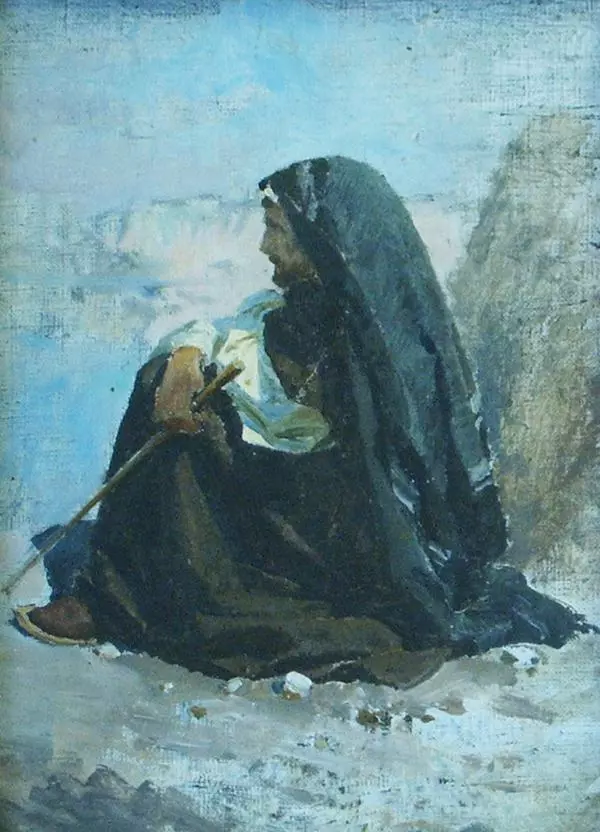The collection of Nikolai Semyonovich Golovanov included 21 works by Polenov. The artist and the conductor had the same view of life. Vasily Polenov’s contemporaries dubbed him “the knight of beauty.”
One of the works from the collection is called “Python’s Cave”, which is displayed in the museum and is located above the desk in the conductor’s office. The painting depicts places that are sacred to the Greeks. According to mythology, the monstrous serpent Python, which lived there, was killed by the god Apollo, the patron of the arts. For many centuries, the culture and mythology of Ancient Greece — the cradle of Western civilization — attracted not only artists but also poets, composers and many art lovers. Vasily Polenov also was a frequent visitor to Greece, and his works reflected not only the beautiful nature of the Balkan Peninsula but also the rich and ancient culture of the Greek people. After his trip to Greece in the 1890s, Polenov together with Savva Mamontov created two stage performances — a play based on Christoph Gluck’s opera “Orpheus and Eurydice” and a tableau vivant “Aphrodite”. Both performances were based on ancient mythology and, as the artist would later reminisce, he took “great delight” in organizing them. The works received rave reviews from many of his contemporaries.
One of the works from the collection is called “Python’s Cave”, which is displayed in the museum and is located above the desk in the conductor’s office. The painting depicts places that are sacred to the Greeks. According to mythology, the monstrous serpent Python, which lived there, was killed by the god Apollo, the patron of the arts. For many centuries, the culture and mythology of Ancient Greece — the cradle of Western civilization — attracted not only artists but also poets, composers and many art lovers. Vasily Polenov also was a frequent visitor to Greece, and his works reflected not only the beautiful nature of the Balkan Peninsula but also the rich and ancient culture of the Greek people. After his trip to Greece in the 1890s, Polenov together with Savva Mamontov created two stage performances — a play based on Christoph Gluck’s opera “Orpheus and Eurydice” and a tableau vivant “Aphrodite”. Both performances were based on ancient mythology and, as the artist would later reminisce, he took “great delight” in organizing them. The works received rave reviews from many of his contemporaries.

